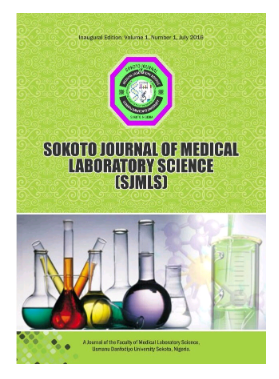Current Approaches to Prenatal Diagnosis of Sickle Cell Anaemia
DOI:
https://doi.org/10.4314/Keywords:
Sickle cells anaemia, current prenatal diagnosis and future perspectiveAbstract
Sickle Cell Anaemia (SCA) is an inherited disease characterized by production of an abnormal haemoglobin, leading to significant health conditions and reduction in patients' quality of life. Globally, the World Health Organization (WHO) reports that 300,000-400,000 new-borns are born with SCA annually. It is an inherited as a recessive trait, which presents a major health challenge, particularly in areas with high incidence rates. Prenatal screening for SCA play a very vital role as it enables early interventions, allows for informed choices on pregnancy management, and guides family decision-making. Accurate diagnosis enables parents to make potential interventions, and future family planning. Advanced testing methods have made SCA diagnosis more accurate and less invasive for earlier detection. The aim of this study was to provide an in-depth analysis of the current state of prenatal diagnosis for SCA. Data were generated from PubMed, Google Scholar, Tailor and Francis, MDPI, Springer, Nature, BMC and some other related information. By examining the advantages, limitations, and accuracy of these methods. In conclusion, the future of prenatal testing for Sickle Cell Anaemia is poised for revolutionary advancements. NIPT emerges as the most promising approach, offering; earlier detection, as early as 5-6 weeks' gestation, higher accuracy and sensitivity, enhanced safety and increased accessibility and affordability. As NIPT continues to advance, integrating artificial intelligence, epigenetic markers, and CRISPR-based diagnostics, it will become the gold standard for Sickle Cell Anaemia diagnosis. Embracing NIPT and its future developments will empower precise and compassionate care, transforming the lives of individuals and families affected by Sickle Cell Anaemia.
Downloads
Published
Issue
Section
License
Copyright (c) 2025 Sokoto Journal of Medical Laboratory Science

This work is licensed under a Creative Commons Attribution 4.0 International License.




